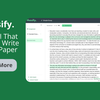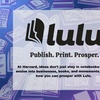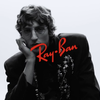{shortcode-f43e68aad3ad7628ad231778fed014919c35bd0f}
Dena’ina poet Annie Wenstrup’s “The Museum of Unnatural Histories” greets viewers with a white cover featuring an intriguing photograph. The illustrated cover contains what look like many fingertip protectors — like those used in sewing — outfitted with patterned fabric and colorful thread that reads like hair, giving it a human aspect. The thin book takes readers on a confusing, 104-page journey through a disjointed collection of times and spaces, both real and imagined.
Throughout the book, there appear several motifs — the color blue, Ggugguyni, the Dena’ina raven, and analogies between human experiences, plants, and animals — none of which form a complete picture. The color blue pops up in multiple poems, including “Still Life: Dinner at Remuda Ranch” and “Ghost Pixels,” as well as in a section title: “The Blue Wing.” Despite this consistency, there is no clear demarcation of this color’s significance. Moreover, it contrasts with the forenote, “for green girls and green women,” confusing readers as to which bears the most significance.
As for Ggugguyni, there is a brief introduction to the figure throughout the introductory poems. Ggugguyni returns throughout the book as primarily a storyteller. While this figure is the most consistent motif, it is still unable to ground the remainder of the poetry coherently. “Ggugguyni Transcribes the Archives” is the only chapter consistent in form. The section offers single-stanza, 14-line poems that each contain a text blurb in the right margin and are garnished with a formulaic title: “As” followed by a name or title such as “diviner” or “girl.”
However, the figure lacks a consistent role in the section. For example, “As Girl” in “Ggugguyni Transcribes the Archives” seems to spell out a simple event: Ggugguyni transcribes the archive, as a girl. However, this poem as well as many others in the section are rooted in bodily, human experiences such as playing with Barbie dolls or folding cardboard boxes. Thus, the introductory poems dedicated entirely to Ggugguyni insinuate a sustained importance of the figure’s perspective that does not come to fruition.
Contrary to the title, there are quite a few natural elements at play throughout the book. For example, “1997 JonBenét Ramsey Tap Dances” serves as an allegory for the infamous death of JonBenét Ramsey, the six-year-old pageant star, in late December of 1996. Wenstrup uses the comparison to reconnect human life cycles with cycles found in nature, such as the water cycle, while using sound to appeal to the ears.
For example, Wenstrup writes, “Breaking sounds like a glacier / caving. Like ice sheets crashing / onto waves.”
Wenstrup further discusses other notable figures from Persephone, Galatea, and Odysseus from Greek mythology to Henry XIII, Duke of Bavaria. The inclusion of so many figures from different cultures and geographical areas fractures the timeline of the book, lacking correlation. Nonetheless, the collection attempts to center itself around the narratives of women as a through-line.
The layout and design of the book itself also creates some confusion. Of the seven sections, only one, “Ggugguyni Transcribes the Archives,” has a consistent structure throughout the section and its poems. Instead, there is a confusing blur of prose, structured poetry, and scientific or historical facts that do little to contextualize the underlying themes in Wenstrup’s writing.
Thus, where the book’s organization likely meant to place readers in an ambiguous space existing somewhere between personal experiences and a natural history and traditional history museum, the message lacks a clear delivery. The title alongside the carefully articulated contents, score, and list of figures begs readers to construct a space in which to imagine the book, but gives them little to work with.
Wenstrup also includes “dioramas” — empty boxes on pages throughout the book with captions for the imagined image.
“Watch,” instructs one caption, “The Curator affixes labels to photos. This helps museum visitors understand what they’re seeing.”
However, readers themselves see nothing. The elementary tone conflicts with the heavier historical and scientific background of the book.
At the same time, Wenstrup uses other tools to develop an academic setting. The table of contents reads like a spreadsheet and the list of figures is a hallmark of an academic paper. Wenstrup creatively uses footnotes alongside text blurbs, not unlike those in textbooks. Together, these tools play into the idea of experiencing a museum, further developing the setting for readers. Although these details of formatting guide readers in the right direction, the content of the poems leaves them grasping to comprehend what exactly Wenstrup is writing about.
This disconnect is furthered by the inclusion of so-called “notes from the curators” and HR policies alongside supplemental blurbs meant to stir up curiosity for viewers. The blurbs, sourced from the National Park Service, Wenstrup’s own mind, and even Reddit comments, ask questions like “how else to answer displacement?” or make comments such as “Basically it’s rude to leave today’s problems for the future!” — ultimately addressing and invoking a viewer’s role. The dioramas and footnotes suggest readers might assume the role of the curators, the orchestrators behind the concoction of words, figures, and stories in the book.
Overall, “The Museum of Unnatural Histories” is a thorough endeavor in carefully curating the visual and auditory experiences of readers. Still, it unfortunately neglects the intellectual experience: The poems either offer very literal comparisons that are uninteresting to read or leave readers straining to connect the dots between poetic forms.
— Staff writer Madelyn E. McKenzie can be reached at madelyn.mckenzie@thecrimson.com.
Read more in Arts
‘MACBETH’ Review: Sparse Staging Becomes a Burden in Mixed Triumph












